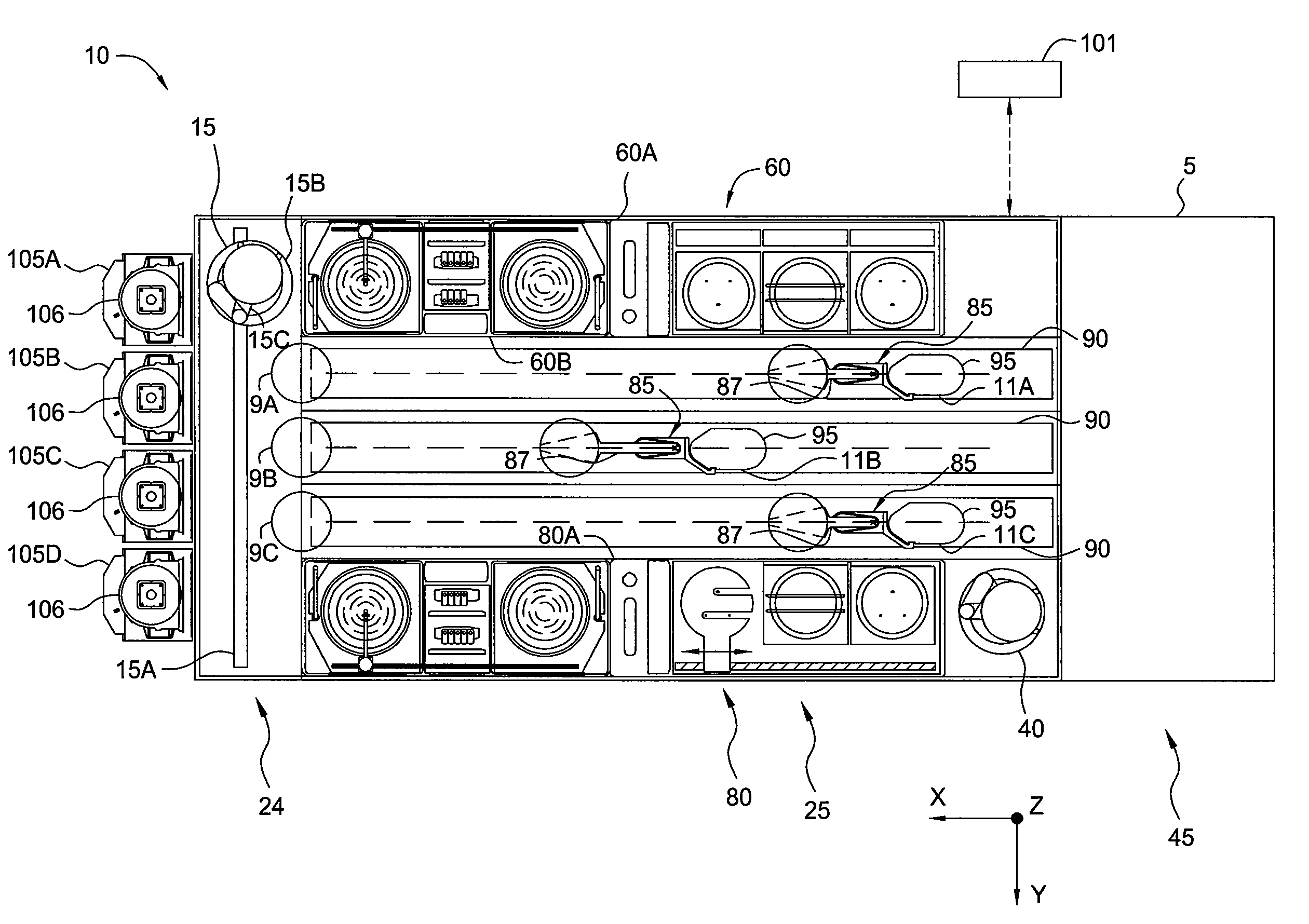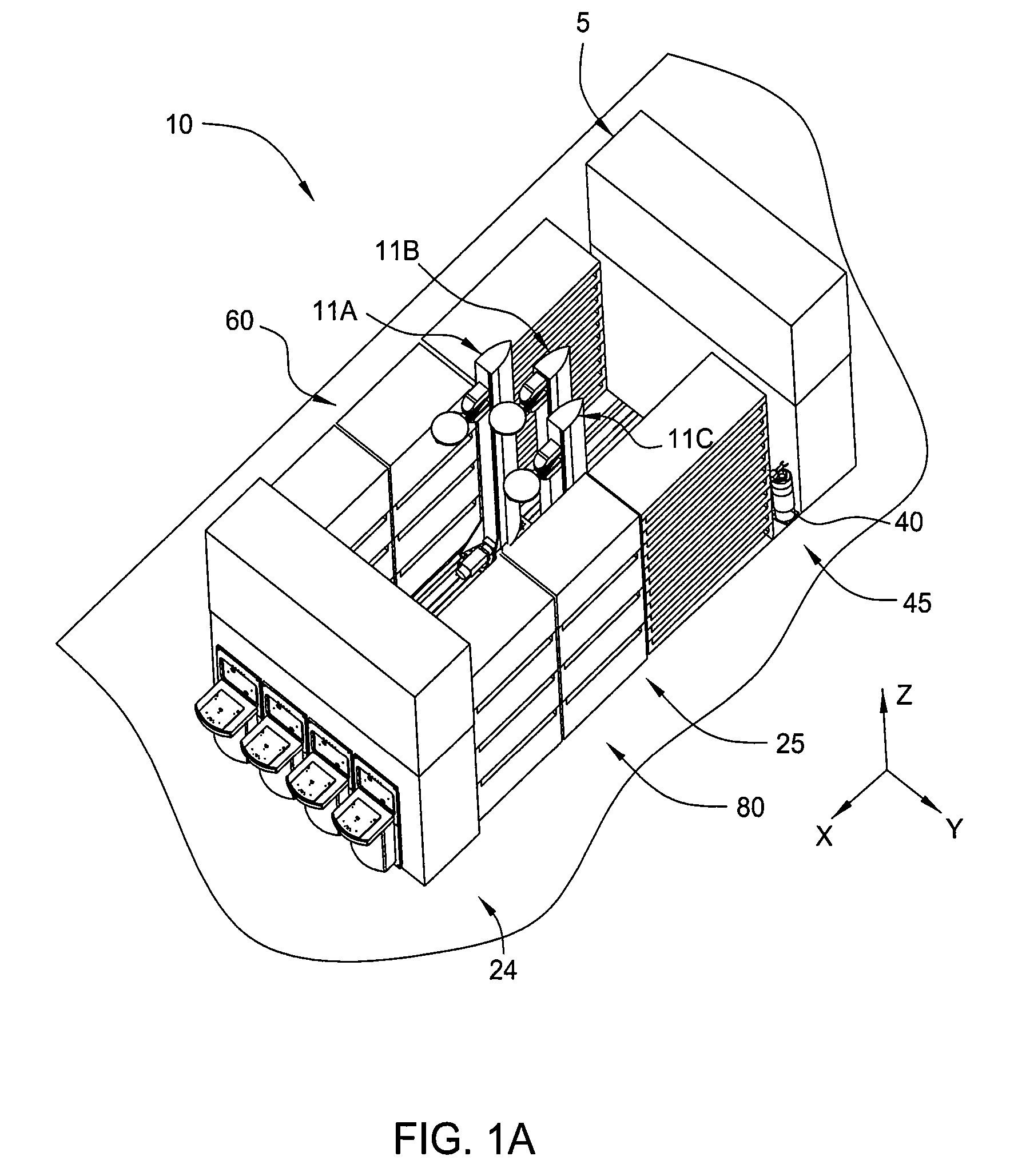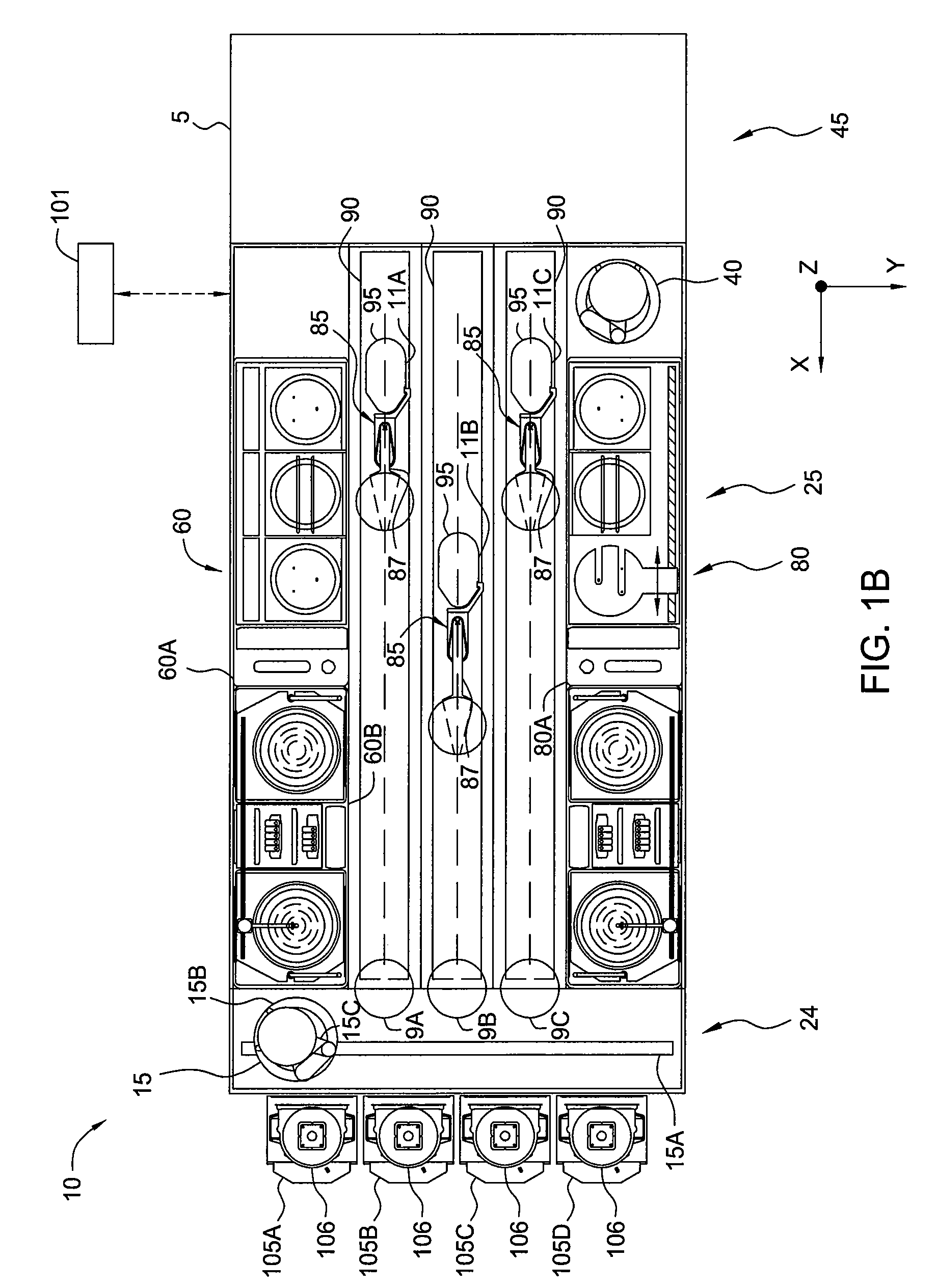Scheduling method for processing equipment
a processing equipment and scheduling method technology, applied in the field of integrated processing systems, can solve the problems of limiting the throughput of the processing sequence, cluster tool users and manufacturers spend a large amount of time, and the time is too long, so as to reduce the time gap, increase the processing throughput of multiple lots of semiconductor wafers, and maintain the effect of wafer history
- Summary
- Abstract
- Description
- Claims
- Application Information
AI Technical Summary
Benefits of technology
Problems solved by technology
Method used
Image
Examples
example
[0112]Examples of the above introduced offline application are further described with reference to FIGS. 6-9. FIG. 6 illustrates an exemplary process flow diagram 1600 describing an example of the rules referred to in step 1520, used to, through software stored in the memory of a controller and some user input, create a schedule for a track system. Although the current example refers to cluster tool 10 with a three robot configuration, it should be noted that the three robot configuration is used only for illustrative purposes, and the offline application and rules can be used to develop schedules for other chambers, for example, chambers containing one, two, or four robot configurations.
[0113]In step 1605, the process begins by examining and inputting the process chamber layout, robot access zones and other system constraints into the offline application software. The input data may be in the form of 3-dimensional positional data of process chamber information (e.g., entrance infor...
PUM
 Login to View More
Login to View More Abstract
Description
Claims
Application Information
 Login to View More
Login to View More - R&D
- Intellectual Property
- Life Sciences
- Materials
- Tech Scout
- Unparalleled Data Quality
- Higher Quality Content
- 60% Fewer Hallucinations
Browse by: Latest US Patents, China's latest patents, Technical Efficacy Thesaurus, Application Domain, Technology Topic, Popular Technical Reports.
© 2025 PatSnap. All rights reserved.Legal|Privacy policy|Modern Slavery Act Transparency Statement|Sitemap|About US| Contact US: help@patsnap.com



